Advertisements
Advertisements
प्रश्न
Given n resistors each of resistance R, how will you combine them to get the (i) maximum (ii) minimum effective resistance? What is the ratio of the maximum to minimum resistance?
उत्तर
Total number of resistors = n
Resistance of each resistor = R
(i) When n resistors are connected in series, effective resistance R1 is the maximum, given by the product nR.
Hence, the maximum resistance of the combination, R1 = nR
(ii) When n resistors are connected in parallel, the effective resistance (R2) is the minimum, given by the ratio `"R"/"n"`.
Hence, minimum resistance of the combination, R2 = `"R"/"n"`
The ratio of the maximum to the minimum resistance is,
`"R"_1/"R"_2 = ("nR")/("R"/"n") = "n"^2`
APPEARS IN
संबंधित प्रश्न
Given the resistances of 1 Ω, 2 Ω, 3 Ω, how will be combine them to get an equivalent resistance of (6/11) Ω?
Determine the equivalent resistance of networks shown in Fig.
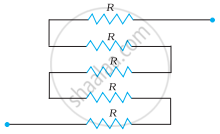
Find the equivalent resistances of the networks shown in the figure between the points a and b.
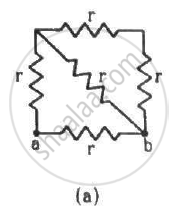
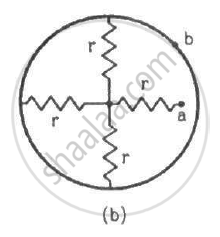
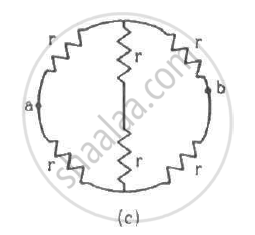
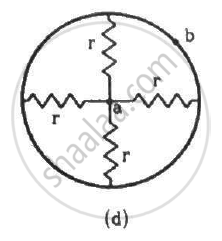
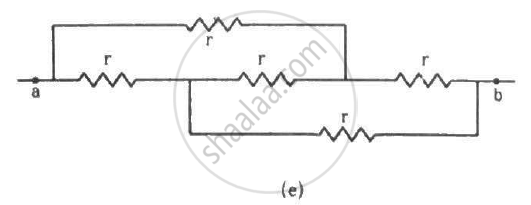
Consider the potentiometer circuit as arranged in the figure. The potentiometer wire is 600 cm long. (a) At what distance from the point A should the jockey touch the wire to get zero deflection in the galvanometer? (b) If the jockey touches the wire at a distance of 560 cm from A, what will be the current in the galvanometer?
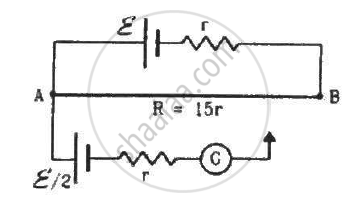
State Kirchhoff’s current rule.
In a potentiometer arrangement, a cell of emf 1.25 V gives a balance point at 35 cm length of the wire. If the cell is replaced by another cell and the balance point shifts to 63 cm, what is the emf of the second cell?
Assertion: Kirchhoff’s junction rule follows from conservation of charge.
Reason: Kirchhoff’s loop rule follows from conservation of momentum.
The e.m.f of The battery in a thermocouple is doubled. The rate of heat generated at one of the junction will.
The figure below shows current in a part of electric circuit. The current I is ______.
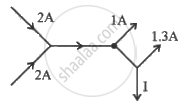
Derive the equation of the balanced state in a Wheatstone bridge using Kirchhoff’s laws.
